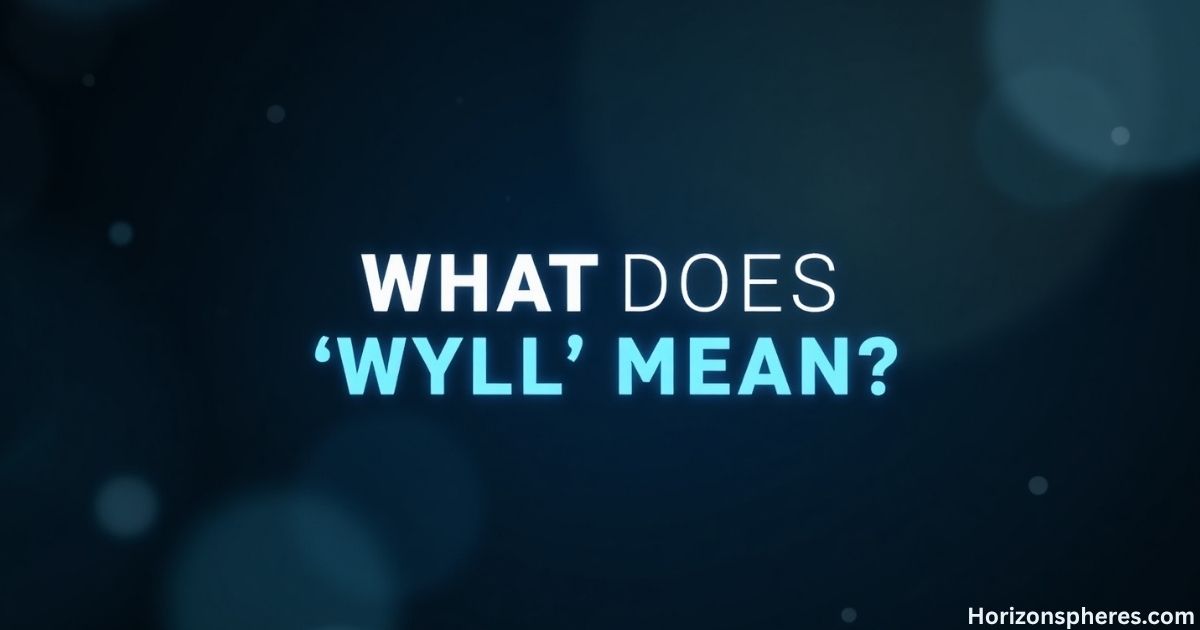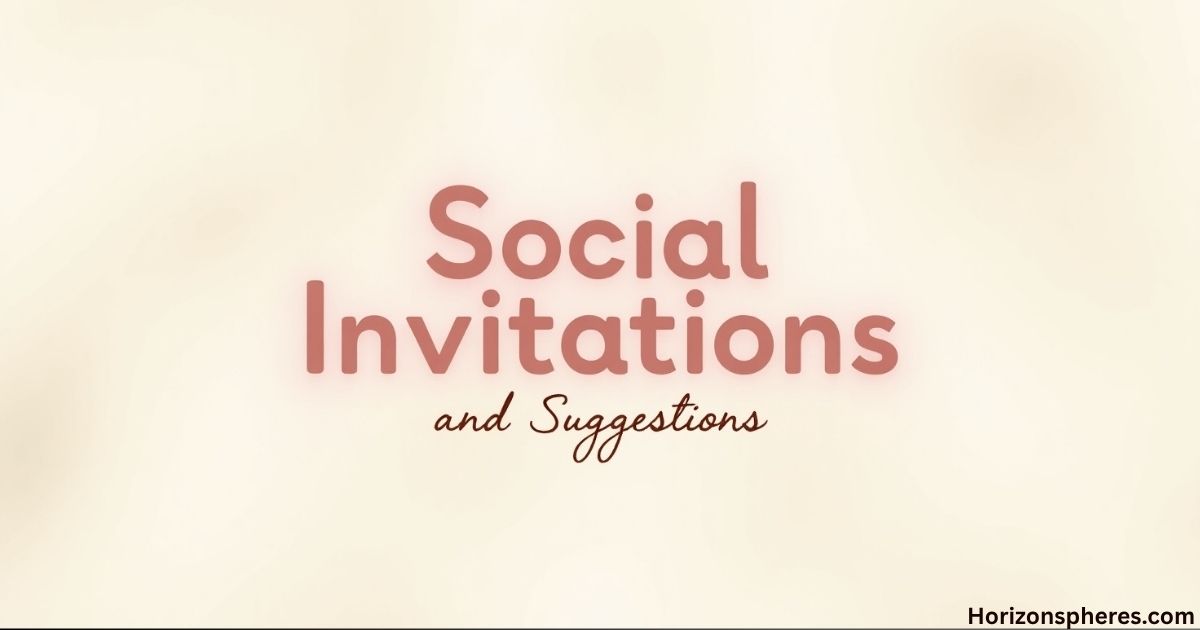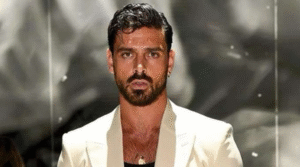“Wyll” is a popular four-letter acronym commonly seen on TikTok, Snapchat, and Instagram that has evolved from historical roots into modern digital slang. This term represents how language continuously adapts through online interactions and generational communication shifts. Understanding “wyll” enhances social media literacy and helps users navigate conversations confidently across various platforms.
What Does “Wyll” Mean?

Wyll’s meaning varies dramatically depending on context and platform usage. In traditional English, it represents an archaic spelling of “will” found in medieval texts and Shakespearean literature. However, modern digital communication has transformed its interpretation completely.
Contemporary wyll meaning primarily stands for “What You Look Like” across social media platforms. This acronym gained massive popularity on TikTok, Snapchat, and Instagram, especially among younger users seeking to connect and share photos with new acquaintances.
Historical Origins of Wyll
The word “wyll” traces back to Middle English and Old English periods, functioning identically to modern “will”. Historical documents from the 14th and 15th centuries frequently employed this spelling variant before language standardization occurred.
Shakespeare and contemporary writers used “wyll” interchangeably with “will” in their literary works. This historical context explains why some encounter the term in academic or literary discussions today.
Modern Digital Transformation
Today’s wyll meaning has completely shifted from historical usage. Social media platforms like TikTok and Snapchat popularized the acronym “What You Look Like” among Gen Z users seeking visual connections.
Urban Dictionary definitions highlight this evolution, showing how digital communication creates new meanings for existing letter combinations. Understanding both contexts prevents confusion in different conversational settings.
Exploring Alternatives to “Wyll” Based on Context
Smart communicators adapt their language based on audience and situation. Wyll alternatives depend heavily on whether you’re engaging in formal business communication or casual social media interactions with friends.
Professional settings require more sophisticated expressions of future intentions and desires. Meanwhile, casual conversations allow for relaxed, friendly language that builds rapport and connection without seeming overly formal or distant.
Professional Communication Alternatives
Business environments demand polished language that conveys competence and reliability. Instead of informal expressions, professionals choose words that demonstrate commitment, planning, and forward-thinking approaches to projects and relationships.
Email correspondence and meeting discussions benefit from precise language that eliminates ambiguity. Clear communication prevents misunderstandings and builds trust among colleagues and clients.
Casual Social Alternatives
Informal settings welcome relaxed language that feels natural and conversational. Friends and family members appreciate genuine expressions that match the relationship’s comfort level and shared communication style.
Social media interactions often favor brevity and authenticity over formal structure. Choosing appropriate alternatives helps maintain authentic connections while expressing intentions clearly and warmly.
| Context | Formal Alternative | Casual Alternative |
| Business | “I intend to complete” | “I’m gonna finish” |
| Social | “I look forward to meeting” | “Can’t wait to see you” |
| Family | “I plan to visit” | “I’ll swing by” |
More Post: SMH Meaning: Professional Alternatives 2025 to “Shaking My Head” That Won’t Ruin Your Reputation
1. I Look Forward To
This phrase represents one of the most versatile and professionally appropriate wyll alternatives available. Business professionals worldwide recognize its effectiveness in conveying anticipation while maintaining appropriate formality levels.
Email signatures frequently feature this expression when expecting responses or future interactions. It strikes the perfect balance between enthusiasm and professionalism, making it suitable for diverse workplace situations.
Professional Email Usage
Corporate communications benefit tremendously from this polished phrase. Whether discussing project timelines or client meetings, it demonstrates engagement without appearing overly casual or inappropriately familiar.
International business often relies on such standardized expressions to ensure clear communication across cultural boundaries. This phrase translates well and conveys respect universally.
Networking and Relationship Building
Professional networking events create opportunities to use this phrase naturally. It helps establish connections while maintaining appropriate boundaries between personal and professional relationships.
LinkedIn messages and conference follow-ups frequently incorporate this expression. It signals genuine interest in continued professional relationships without seeming pushy or overly aggressive.
2. I Plan To
Strategic communication requires expressions that convey thoughtful preparation and intentional decision-making. “I plan to” demonstrates organization and forward-thinking while remaining accessible to diverse audiences across professional and personal settings.
Project management discussions rely heavily on this phrase to establish timelines and accountability. It suggests deliberate action rather than spontaneous decisions, building confidence among team members and stakeholders.
Goal Setting and Project Management
Business planning sessions utilize this phrase to articulate objectives and milestones. It helps create clear expectations while allowing flexibility for inevitable adjustments and refinements throughout project lifecycles.
Performance reviews often feature this expression when discussing future objectives. It demonstrates proactive thinking and commitment to professional growth and development.
Personal Life Applications
Family planning conversations benefit from this measured approach to expressing intentions. It shows consideration for others’ schedules and commitments while maintaining personal autonomy and decision-making authority.
Travel arrangements and social events become clearer when participants use definitive language. This phrase helps coordinate group activities without creating unnecessary pressure or obligations.
3. I Intend To
Formal declarations require language that conveys seriousness and deliberate commitment. “I intend to” carries weight that simpler alternatives cannot match, making it essential for legal, academic, and high-stakes professional communications.
Contract negotiations and policy discussions frequently employ this phrase to establish clear positions and expectations. It eliminates ambiguity while demonstrating thoughtful consideration of consequences and implications.
Legal and Academic Contexts
University research proposals and thesis statements rely on this formal expression to convey scholarly commitment. Academic advisors expect such precise language when students outline their research intentions and methodological approaches.
Legal documents require unambiguous language that courts can interpret consistently. This phrase helps establish clear intentions without creating loopholes or misunderstandings.
High-Stakes Professional Situations
Board presentations and executive communications demand language that conveys authority and decisiveness. This phrase helps leaders articulate vision while maintaining flexibility for strategic adjustments.
Merger negotiations and partnership agreements benefit from such definitive language. It establishes serious commitment while preserving necessary legal protections and contingencies.
More Post: FAFO Meaning Explained: What This Viral Acronym Really Means in 2025
4. I’ll Be Happy To
Customer service excellence depends on language that conveys genuine willingness to help while maintaining professional standards. This phrase creates positive interactions that build loyalty and trust between service providers and clients.
Hospitality industries rely heavily on such expressions to create welcoming environments. Hotels, restaurants, and retail establishments train staff to use warm, accommodating language that enhances customer experiences.
Customer Service Excellence
Support representatives use this phrase to de-escalate tense situations and rebuild customer confidence. It transforms potentially negative interactions into opportunities for relationship building and problem resolution.
Sales professionals incorporate this expression to overcome objections and build rapport with potential clients. It demonstrates flexibility and customer-focused thinking that differentiates superior service providers.
Personal Relationship Building
Community volunteering and neighborhood interactions benefit from this generous spirit. It helps build social connections while contributing positively to local community development and mutual support networks.
Family dynamics improve when members express willingness to help each other. This phrase creates positive communication patterns that strengthen relationships and encourage reciprocal generosity.
5. I’d Like To
Polite suggestions and expressions of desire require gentle language that respects others’ autonomy while clearly communicating personal preferences. This phrase strikes the perfect balance between assertiveness and consideration.
Dating conversations and romantic relationships benefit from such diplomatic language. It expresses interest without creating pressure or appearing overly aggressive in pursuit of personal desires or objectives.
Social Invitations and Suggestions

Party planning and group activities become more inclusive when organizers use inviting rather than demanding language. This phrase encourages participation while respecting individual choices and scheduling constraints.
Key Benefits:
- Increases attendance by making invitations feel welcoming rather than obligatory
- Reduces social pressure on guests who might have scheduling conflicts
- Creates positive group dynamics through respectful communication
- Builds stronger friendships by showing consideration for others’ circumstances
- Prevents awkward situations when people need to decline invitations
Restaurant selections and entertainment choices require negotiation among different preferences. This phrase helps groups reach consensus without creating conflict or hurt feelings.
Practical Applications:
- Movie night planning – “I’d like to suggest a comedy tonight”
- Dinner reservations – “I’d like to try that new Italian place”
- Weekend activities – “I’d like to go hiking if everyone’s interested”
- Birthday celebrations – “I’d like to plan something special for Sarah”
- Holiday gatherings – “I’d like to host Thanksgiving this year”
Communication Tips:
- Always provide alternative options when making suggestions
- Use open-ended questions to gauge group interest
- Acknowledge different preferences without dismissing them
- Offer flexibility in timing and location choices
- Express gratitude when others accommodate your suggestions
Professional Diplomacy
Workplace suggestions and process improvements require careful presentation to avoid appearing critical of current practices. This phrase introduces ideas constructively while maintaining collegial relationships.
Team meetings benefit from such diplomatic language when discussing controversial topics or proposing significant changes. It encourages open dialogue while minimizing defensive reactions.
Choosing the Right Alternative Based on Tone and Context
Successful communication requires matching language choices to specific situations and audiences. Tone awareness helps prevent misunderstandings while building stronger relationships across personal and professional contexts through appropriate expression selection.
Cultural sensitivity plays a crucial role in international communications. What sounds perfectly natural in American English might seem too casual or overly formal in other English-speaking countries and cultural contexts.
Formal Business Communications
Corporate environments expect polished language that reflects organizational values and professional standards. Email etiquette varies significantly between industries, with legal firms requiring more formal approaches than creative agencies or tech startups.
International business demands extra attention to cultural nuances and communication styles. Understanding these differences prevents unintentional offense while building stronger cross-cultural professional relationships.
Casual Social Interactions
Friend groups develop unique communication patterns that outsiders might find confusing or inappropriate. Inside jokes and shared references create bonding experiences while potentially excluding newcomers from conversations.
Family dynamics influence communication styles throughout individuals’ lives. Regional dialects and generational differences create rich linguistic diversity within single households and extended family networks.
More Post: Gyatt Meaning: Understanding Its Meaning in Modern 2025 Text, Slang, and Digital Communication
Examples of Well Wishes in Different Contexts
Expressing good intentions requires sensitivity to relationships, occasions, and cultural expectations. Well wishes strengthen social bonds while demonstrating care and consideration for others’ experiences and circumstances.
Holiday greetings and milestone celebrations offer opportunities to practice appropriate well-wishing across diverse social and professional networks. Understanding these nuances prevents awkward situations and builds stronger connections.
Professional Well Wishes
Career transitions and business achievements call for congratulatory messages that balance enthusiasm with professional appropriateness. LinkedIn posts and office celebrations require different approaches to expressing support and recognition.
Retirement parties and promotion announcements create opportunities for colleagues to demonstrate mutual respect and appreciation. These moments strengthen workplace culture and individual relationships.
Personal Celebration Messages
Weddings, graduations, and new babies inspire heartfelt expressions of joy and support. Family traditions and cultural customs influence appropriate language choices for these significant life events.
Social media posts and greeting cards serve different purposes in contemporary celebration practices. Understanding when to use each medium helps ensure messages reach intended audiences effectively.
| Occasion | Professional Wish | Personal Wish |
| Promotion | “Congratulations on your well-deserved success” | “So proud of you!” |
| Wedding | “Wishing you both happiness and prosperity” | “Can’t wait to celebrate with you!” |
| Graduation | “Best wishes for your future endeavors” | “You did it! Time to party!” |
Frequently Asked Questions
What does wyll mean in texting?
Wyll in texting means “What You Look Like” – commonly used on Snapchat and TikTok for photo requests.
What is slang for wyll?
WYLL serves as modern internet slang meaning “What You Look Like” across various social media platforms.
What to do if a girl says wyll?
Reply with a recent photo or ask “wyll” back – it’s typically a friendly photo exchange request.
Why do girls always say “wyll”?
Both guys and girls use wyll equally on social platforms for connecting and photo sharing purposes.
What does wyll stand for?
WYLL stands for “What You Look Like” in modern internet communication and social media messaging.
What is wyll in a chat?
In chat conversations, wyll requests a photo to see someone’s appearance, common in online dating scenarios.
Conclusion
Understanding wyll meaning opens doors to better social media communication and digital literacy. Whether encountering it on TikTok, Snapchat, or Instagram, you now possess the knowledge to respond appropriately and confidently in various online interactions and conversations.










